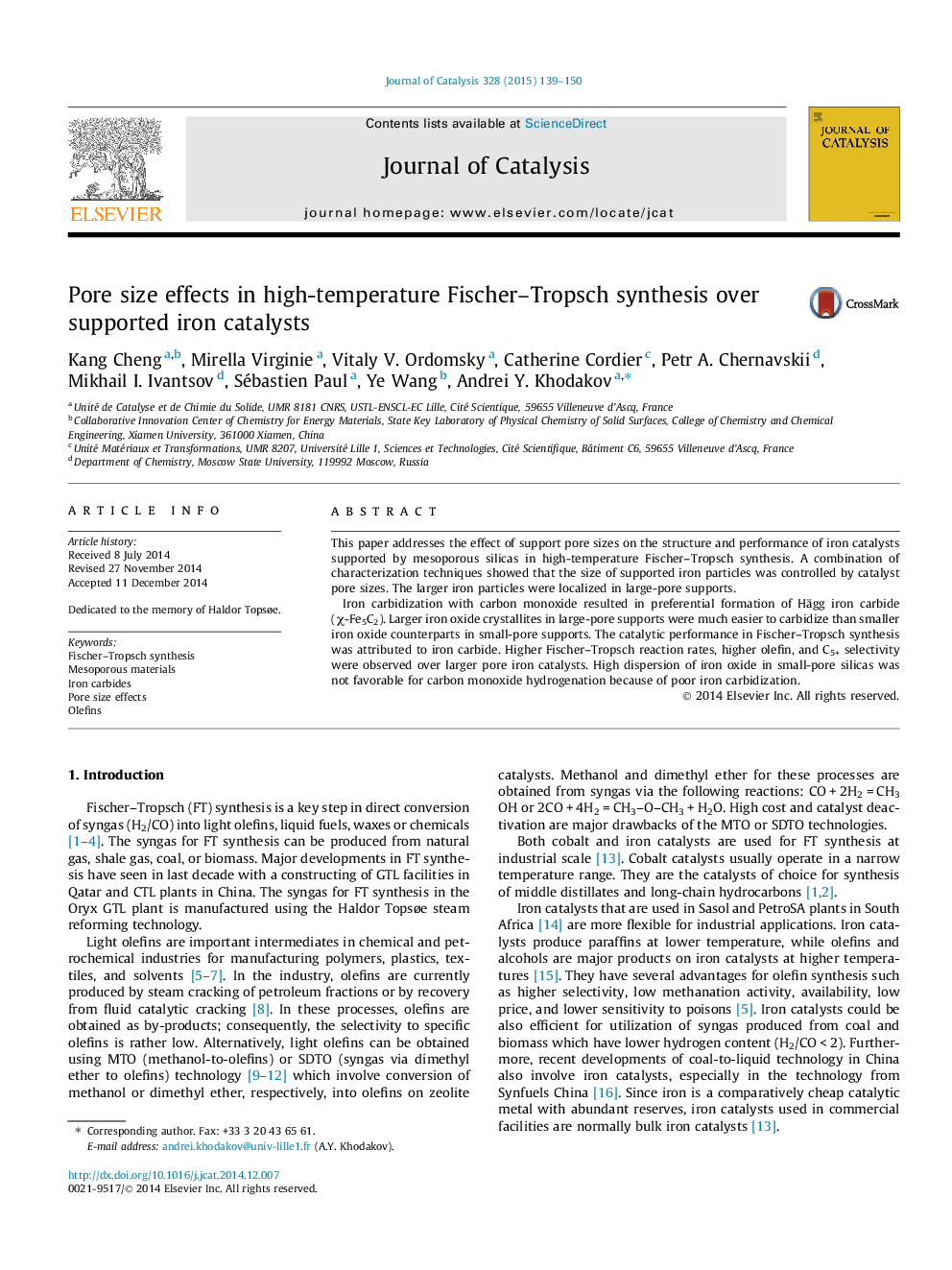| Article ID | Journal | Published Year | Pages | File Type |
|---|---|---|---|---|
| 60772 | Journal of Catalysis | 2015 | 12 Pages |
•Iron species in silica-supported catalysts as a function of pore diameter.•Larger iron nanoparticles are located in larger pore catalysts.•Fischer–Tropsch performance is attributed to Hägg iron carbide.•Extent of iron carbidization depends on iron particle size and pore diameter.•Better catalytic performance is observed on larger pore catalysts.
This paper addresses the effect of support pore sizes on the structure and performance of iron catalysts supported by mesoporous silicas in high-temperature Fischer–Tropsch synthesis. A combination of characterization techniques showed that the size of supported iron particles was controlled by catalyst pore sizes. The larger iron particles were localized in large-pore supports.Iron carbidization with carbon monoxide resulted in preferential formation of Hägg iron carbide (χ-Fe5C2). Larger iron oxide crystallites in large-pore supports were much easier to carbidize than smaller iron oxide counterparts in small-pore supports. The catalytic performance in Fischer–Tropsch synthesis was attributed to iron carbide. Higher Fischer–Tropsch reaction rates, higher olefin, and C5+ selectivity were observed over larger pore iron catalysts. High dispersion of iron oxide in small-pore silicas was not favorable for carbon monoxide hydrogenation because of poor iron carbidization.
Graphical abstractFigure optionsDownload full-size imageDownload high-quality image (59 K)Download as PowerPoint slide
